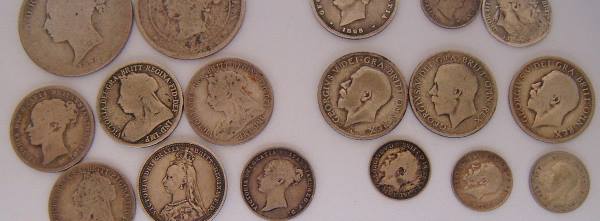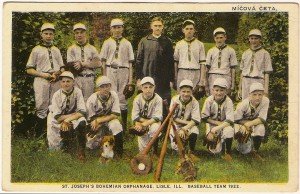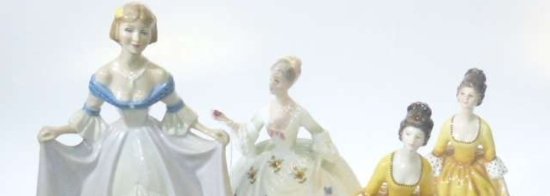As one of the world’s oldest recreations, dating back to at least 2000 BC, it is not surprising that there is a growing interest in collecting the diverse memorabilia which the sport of fishing generates. The art of angling – or fishing with a rod, line and hook – lies not just in knowing where the fish will be and what they might be feeding on, but in having the right tackle at the right time. Over the past 200 years a complete industry has grown up solely to service this need. The ‘complete’ angler of the nineteenth and early twentieth century was no different to his or her counterpart today. Standard accoutrements included rods, reels, a fishing basket, landing equipment such as nets and gaffs, artificial lures and flies, and finally, assorted gadgetry to help prepare the angler for the task at hand, the catching of fish.
The rods of yesteryear were made of a variety of special timbers, such as greenheart, hickory or lancewood, but by the end of the nineteenth century, the discerning angler preferred the hexagonal version made from gluing separate sections of imported Chinese Tonkin cane. These split cane rods, as they were called, delivered a much superior action, particularly in fly casting where the action of the rod was critical to the success of the cast. The best known of the early split cane rod makers was Hardy Bros of England although William Southam of Sydney and J.M. Gillies in Melbourne were also very highly regarded. These makers always branded their rods so even today they are easily identified. For a split cane rod to retain its value as a collectable it is vital that it be in absolutely original condition, Once the rod has been restored, no matter how professionally, its value drops sharply. Unfortunately, it is not always easy for the collector to know whether or not there has been any restoration carried out, so it is a matter of buyer beware.
Reels, on the other hand, present fewer problems for the collector as it will usually be obvious when a reel has been restored. Once the natural patina of the alloy – which could be brass, gunmetal, nickel silver or aluminium – is interfered with by excessive polishing, it is virtually impossible to restore it to its original appearance. The sheer diversity of old fishing reels is quite bewildering and it is common to find collectors specialising in a particular type of reel such as fly reels used for trout and salmon, big game-fishing reels used for sharks and marlin, multiplying reels such as baitcasters used for surf and river fishing, wooden and brass ‘knuckledusters’ used off the rock platforms and jetties, and so on. The variety is endless. Here, the key to value is not just condition but rarity. Some reels, such as the common bakelite reels from the 1930s, were made in the tens of thousands and are consequently worth very little, even today. Also, many of the wooden and brass reels from the same period carry no markings and more often than not could have been home-made. A simple rule to observe with collecting old reels, and in fact most fishing tackle, is that a brand on the item will usually add value. Unfortunately there are many extremely collectable and valuable reels which carry no brand. Here, the collector must rely upon the specialist collectors’ guidebooks which are available so as to be able to identify these treasures when they show up.
Australian collectors are increasingly specialising in Australian-made reels as they begin to discover what a rich heritage we have in our own backyard. While names like Alvey have been well known to most anglers since the 1920s, recent research has identified hundreds of other reel makers from the early twentieth century who produced reels of considerable ingenuity and very high quality. In some areas Australian-made reels were world leaders. This is particularly true in the field of big game fishing where the reels of Leo Willis, Ted Bush and Fred Smith, produced during the 1930s, have never been surpassed for quality of both engineering design and workmanship. These reels, when they occasionally surface, now command prices in the many thousands of dollars. When Zane Grey, the well-known writer and big game angler, visited Australia to fish in 1936, he found the Atalanta game reels made by Fred Smith for Errol Bullen and the cane rods of Bill Southam to be among the best outfits he had ever fished with.
Every angler today has approximately ten times more tackle than they will ever use. The angler of fifty years ago was no different. It seems that angling is, and always has been a disease which not only requires the regular catching of fish to provide some relief from the symptoms, but also the regular purchase of the latest gadgetry. Nowhere is this passion for acquisition more apparent than in the number of artificial lures in any angler’s tackle box. Open any tackle box and you will find thirty or forty lures which have never been used. Opening such a tackle box from the 1930s or earlier is akin to opening Aladdin’s Cave. An extensive collection of English lures from the turn of the century which were contained within the manufacturer’s original display case recently sold at auction at Christie’s South Kensington, London for 26,000 pounds, one of eighteen such cases made by various English manufacturers for the Parisian fishing tackle store Wyres Freres. (The eighteen cases realised a total price of over 150,000 pounds.)
In the world of fishing gadgetry, there are always new surprises. The challenge for the collector is often simply to try and deduce what the purpose of the gadget was. As advancing technology has progressively phased out old gadgets it seems to introduce just as many new ones. In the nineteenth century no angler was complete without a gut twister to thread the horsehair line and provide strengthened traces, or a brass clearing ring to free that snagged lure, or a specially threaded multi-compartment, multi-section, wooden compendium for housing separately the hooks and sinkers of various sizes. The fly fisherman of last century had more gadgetry attached to his fishing vest than could be seen in most tackle shops: lapel magnifiers to examine the local insect life at streamside, hook removers, line greasers, multi-purpose fishing knives, pocket thermometers, and so on. There is now a small dedicated group of collectors who specialise in what are called ‘Vest Pocket Collectables’.
Since Izaak Walton wrote The Compleat Angler way back in 1653, it has been reprinted more often than any other book with the exception of the Bible. Indeed, more books have been written on the subject of fishing in the ensuing 350 years than on any other sport. Today, the rate of new titles being published continues unabated but it is the older books which now command very high prices. If you were able to smuggle a copy of the first edition of Walton out of England – it is virtually a prohibited export – it would probably have cost you around $50,000. More in the price range of the average collector are books by authors such as Halford and Skues on the subjects of dry fly and wet fly fishing respectively and books on game-fishing in the golden years leading up to 1940 by authors such as Charles Holder and Zane Grey. On the home front, the most collectable Australian authors are Dick Wigram, David Scholes and Howard Joseland. Joseland now even has an Australian fishing book collectors’ group, the Joseland Society, named after him, whose members meet regularly to talk ‘fishing in print’ and compare successes in their search along the dusty trail for scarce items.
Finally, like most other sports, fishing has its own collectable ephemera. Much sought after are the tackle catalogues published by the various manufacturers, wholesalers and retailers of fishing tackle, particularly if they are pre1930. Again, Hardy Bros lead the field here and their annual catalogues, called the Hardy’s Anglers’ Guide, from these early periods command prices up to several hundred dollars. Less expensive, but almost as much sought after, are the catalogues put out by the Sydney and Melbourne fishing tackle specialists such as Mick Simmons and Hartleys. Unfortunately, like much ephemera, the general public place little value on these old catalogues and they are usually taken to the tip, which of course now accounts for their scarcity. This is a shame as they contain much of interest to the serious collector and very few, if indeed any libraries have copies in their collections.
Unlike most sports, particularly those involved in the Olympics, fishing is not much of a team sport. Nor does it have much in the way of spectator appeal. It is more in the nature of a personal sporting experience which engages the mind as much as the body. Or, in the words of Izaak Walton, the ‘contemplative’s man’s recreation’. These days there is for the collector, much indeed to contemplate in the exciting and growing world of fishing collectables.





